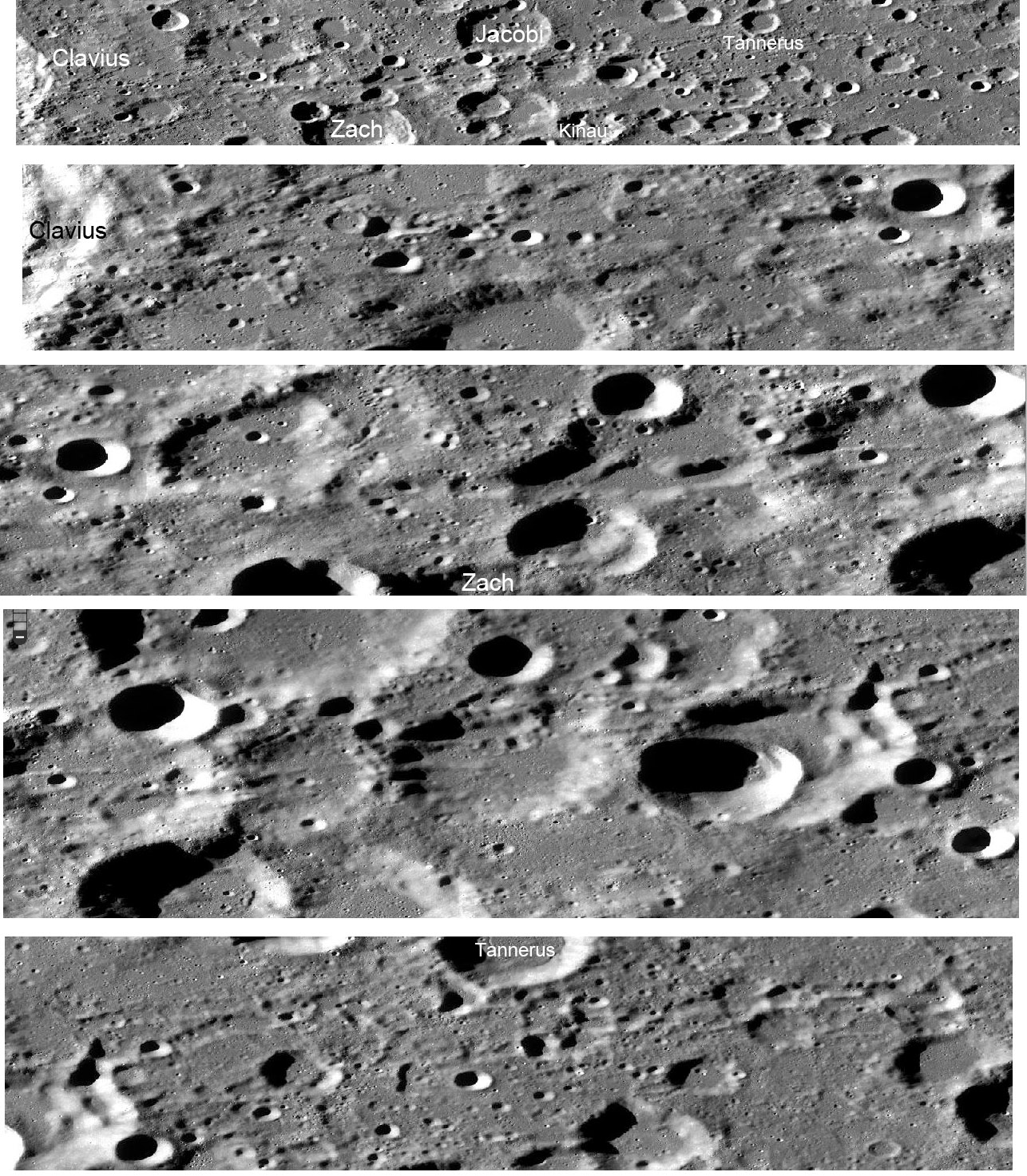Difference between revisions of "June 28, 2012"
| Line 24: | Line 24: | ||
<br /> | <br /> | ||
<p><b>Yesterday's LPOD:</b> [[June 27, 2012|Blue Lava]] </p> | <p><b>Yesterday's LPOD:</b> [[June 27, 2012|Blue Lava]] </p> | ||
| − | <p><b>Tomorrow's LPOD:</b> [[June 29, 2012| | + | <p><b>Tomorrow's LPOD:</b> [[June 29, 2012|Submerged Terrain]] </p> |
<hr /> | <hr /> | ||
Revision as of 13:28, 7 February 2015
A Long Way From Home

images clipped from LRO QuickMap (NASA/Arizona State University)
I have written more than 2500 LPODs and have been studying the Moon professionally since the early 1960s
but I am always coming across things I've never noticed before. Extending eastward from Clavius is a 1000 km
alignment of linear depressions and overlapping craters that define a huge secondary crater chain. It stretches
somewhat beyond Tannerus and occasional linear bits can be seen east of there. Using my now trusty Sky &
Telescope lunar globe I see that this crater chain is radial to the Orientale Basin. The end of the chain is about
4000 km distant from the center of the basin. The components of the chain look much more degraded than the
sharp rim crest of the Cordillera, even though both are the same age. The explanation is that the chain depres-
sions were made by low angle projectiles traveling fast, but at a lower velocity than cosmic projectiles. So these
craters never looked like pristine impact craters, and when they formed simultaneously they were instantaneously
degraded. Many parts of the chain are embayed by smooth material which is probably another style of Orientale
ejecta that perhaps arrived slightly later than the hard stuff that made the depressions. Like secondary crater
chains from Tycho or Copernicus we can image that this chain also appeared as a huge bright ray.
Chuck Wood
Related Links
Rükl plates 73 & 74
Yesterday's LPOD: Blue Lava
Tomorrow's LPOD: Submerged Terrain



